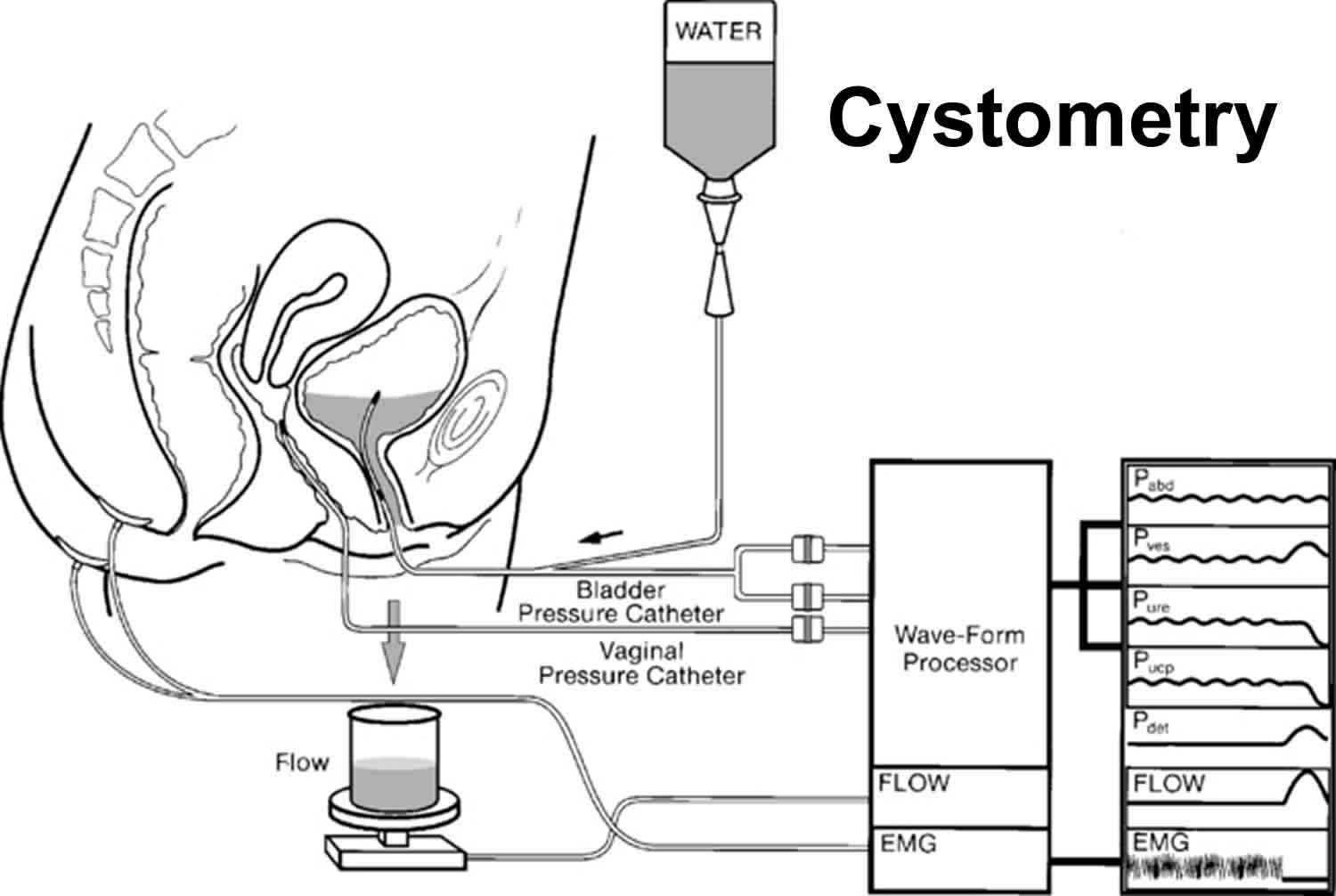Cystometry
Cystometry also called cystometrogram, is used to measure how much urine (fluid) your bladder can hold when you first feel the need to urinate, when you are able to sense fullness, and when your bladder is completely full 1. Cystometry also measures pressure inside the bladder and how full it is when you have the urge to go. Cystometry will help determine the cause of bladder voiding dysfunction. Cystometry together with a pressure flow study (uroflowmetry) is part of urodynamic testing. These tests measure how well the bladder functions. They help diagnose problems related to urine control. These can be incontinence, difficulty emptying the bladder, overactive bladder, obstructions or frequent infections.
Cystometry procedure
There is nothing special needed to prepare for cystometric test. Some people are asked to stop certain medicine before the test. Sometimes antibiotics are given before you start. This is done to prevent infection.
Before the cystometric test, you will be asked to empty your bladder as much as you can, you may be asked to urinate (void) into a special container that is interfaced with a computer. This type of study is called a uroflowmetry, during which the following will be recorded by the computer:
- The time it takes you to begin urinating
- The pattern, speed, and continuity of your urinary stream
- The amount of urine
- How long it took you to empty your bladder
You will then lie down, and a thin, flexible tube (catheter) is gently inserted into the urethra until it reaches your bladder. The catheter measures any urine left in your bladder after you go. Plus, it measures the strength of your bladder by recording pressure. A tube used to monitor bladder pressure (cystometer) is attached to the catheter. The catheter also allow the bladder to be emptied completely. A smaller catheter, about the size of a soft spaghetti noodle, is sometimes placed in your rectum in order to measure pressure on the outside of the bladder in the abdomen. Measuring electrodes, similar to the sticky pads used for an ECG, are placed near the rectum.
Your bladder is then slowly filled with liquid (usually sterile water, sterile saline, or a sterile fluid). This liquid includes a dye that can be seen on x-ray. You will be asked to describe what you feel in your bladder. Does it feel cool? Do you feel full? Does it hurt? You may be asked to cough or bear down to see if there are leaks.
When you feel a full bladder and you need to urinate, you will do so in a special toilet. You will go while the special catheters and sensors are in place. This allows your health care provider to measure pressure as you urinate. This part of the test is called a Voiding Pressure Study (pressure flow study).
For about one day after the study, some people feel a sense of burning or pain when they urinate or may see blood. This will go away. If you continue to see blood in your urine or have a fever, please tell your doctor.
Often, your doctor may need more information and will order tests to evaluate your bladder function. This set of tests is often referred to as urodynamics or complete urodynamics. The combination includes three tests:
- Measured voiding without a catheter (uroflow)
- Cystometry (filling phase)
- Voiding or emptying phase test
For complete urodynamic testing, a much smaller catheter is placed in the bladder. You will be able to urinate around it. Because this special catheter has a sensor on the tip, the computer can measure the pressure and volumes as your bladder fills and as you empty it. You may be asked to cough or push so that the provider can check for urine leakage. This type of complete testing can reveal a lot of information about your bladder function.
For even more information, x-rays can be taken during the test. In this case, instead of water, a special fluid (contrast) that shows on an x-ray is used to fill your bladder. This type of urodynamics is called videourodynamics.
How to prepare for the cystometric test
No special preparations are needed for cystometric test. For infants and children, preparation depends on the child’s age, past experiences, and level of trust.
How the cystometric test will feel
There is some discomfort associated with this test. You may experience:
- Bladder filling
- Flushing
- Nausea
- Pain
- Sweating
- Urgent need to urinate
- Burning
What abnormal cystometric test results mean?
Abnormal cystometry results may be due to:
- Enlarged prostate
- Multiple sclerosis
- Overactive bladder
- Reduced bladder capacity
- Spinal cord injury
- Stroke
- Urinary tract infection
Cystometry risks
There is a slight risk of urinary tract infection and blood in the urine.
References




